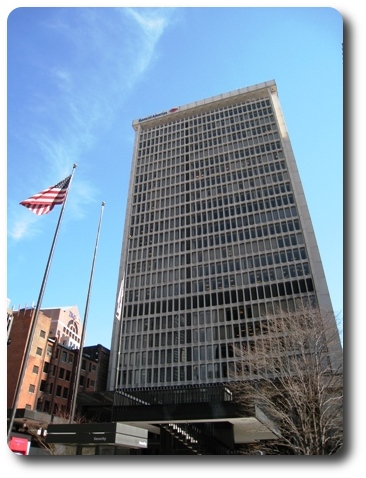 Who says there is no money out there to borrow against home equity?
Who says there is no money out there to borrow against home equity?
After doing a little business with Bank of America in downtown Hartford the other day I was surprised to see a big sign in their lobby announcing Home Equity Lines with rates of 4.24% for $50,000 and $100,000 lines. The gentleman at the info desk assured me that not only was it still possible to get a home equity line, but that Bank of America has been offering them without interruption! I was not allowed to take a picture of the sign as proof, but I swear it exists. A quick search of the World Wide Web confirms that Bank of America is in the game, and shows that other lenders are also advertising home equity lines on their websites.
Home equity lines played a big role in our current financial crisis. Although they can serve a variety of purposes, many homeowners bet that home prices would continue to rise and used their line to extract all of the equity from their property. The cash in hand was spent on anything from home improvements to retiring more expensive debt to discretionary purchases with no enduring value. All the anecdotal evidence that I had seen suggested that banks either froze or cancelled outstanding home equity lines in an effort to manage the risk to their firm’s capital. The resulting reduction of available credit has been an inconvenience to some, and has actually hurt the credit score of others.
According to a local mortgage broker, home equity lines never completely went away. Instead the lenders simply became more conservative. They definitely froze and cancelled some lines, but at the same time they were still willing to extend new lines to very well qualified borrowers. If you had low loan-to-value ratios and good credit you have always been able to get a line. Lenders have also been changing their pricing. Where before they would offer a discount to Prime with no minimum rate, they are now charging a premium above Prime with a minimum interest rate of 4%. Finally, borrowers need to look carefully at the overall cost of a home equity line since very few people qualify for the advertised rates. Most borrowers end up paying additional points, fees, and/or expenses that increase the effective interest rate, or APR, of the line.
So it seems that the major financial institutions are still willing to add some risk to their portfolios. And we know that the government wants them to be lending despite being forced to provide considerable assistance to keep the institutions solvent. The underlying economic theory is the multiplier effect, which tries to quantify the overall impact of an additional dollar. In this case, each dollar that is loaned is spent and re-spent a number of times, spurring growth in the overall economy.
My conclusion after all of this is that although home equity lines are advertised as available, they might not be available to you. And even if you do qualify, the line may be more expensive than expected. As always, be careful when borrowing…
Do you know of any websites that assist in analyzing the costs and benefits of refinancing a mortgage?
Some of the questions I would be looking to answer are:
How long do I need to stay in the home to get full payback on the refinancing?
The rule of thumb that I have heard is that it requires a least a 1% drop in you interest payment to make sense to pursue refinancing. How could I validate that?
Other factors that I should consider?
Hey Ben, thanks for the question.
While I’m sure that there are some good websites out there, this is a decision that we can analyze ourselves. I put together a model when Amy and I refinanced that you may find useful. http://www.amybergquist.com/files/Refinance.xls
I wanted to look at the difference in cash flows, so I lined up our current mortgage with a new mortgage at a lower rate to see what would happen. I then calculated the present value and IRR considering both the investment (refinance costs & hassle) and the monthly mortgage payment savings.
The base case in the Excel sheet is a generic refinance from a 6.5% rate to a 5.0% rate for a $400,000 (initial value) mortgage. This scenario would be an obvious refinance since the homeowner would save over $400 per month on their payments.
The only additional factor to consider is that you may need more cash than expected when closing the refi because you will have to fund new escrow accounts. Note that once the old mortgage is released you will also receive a check for the unused amount in the old escrow accounts.
Good luck, and feel free to ask more questions!